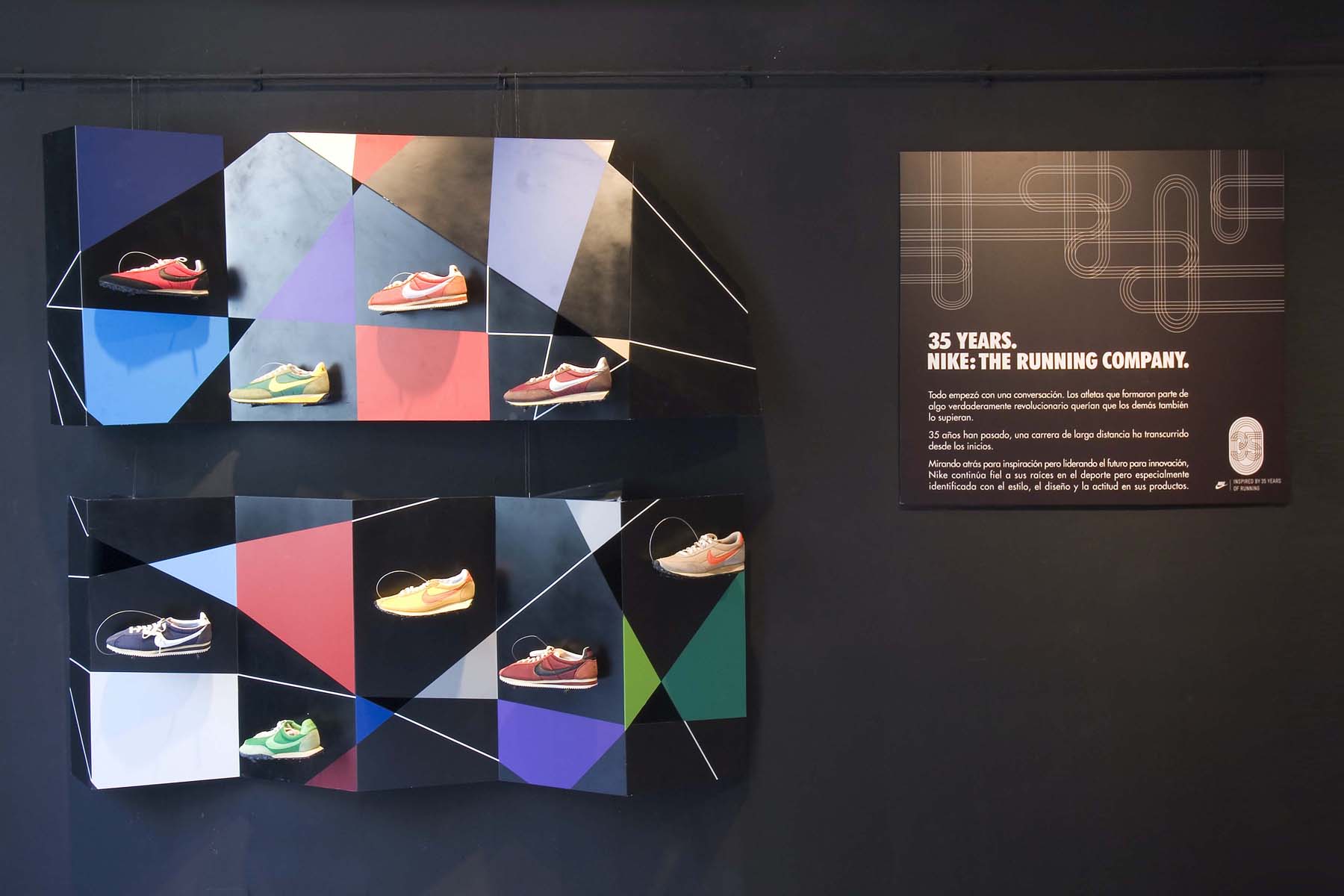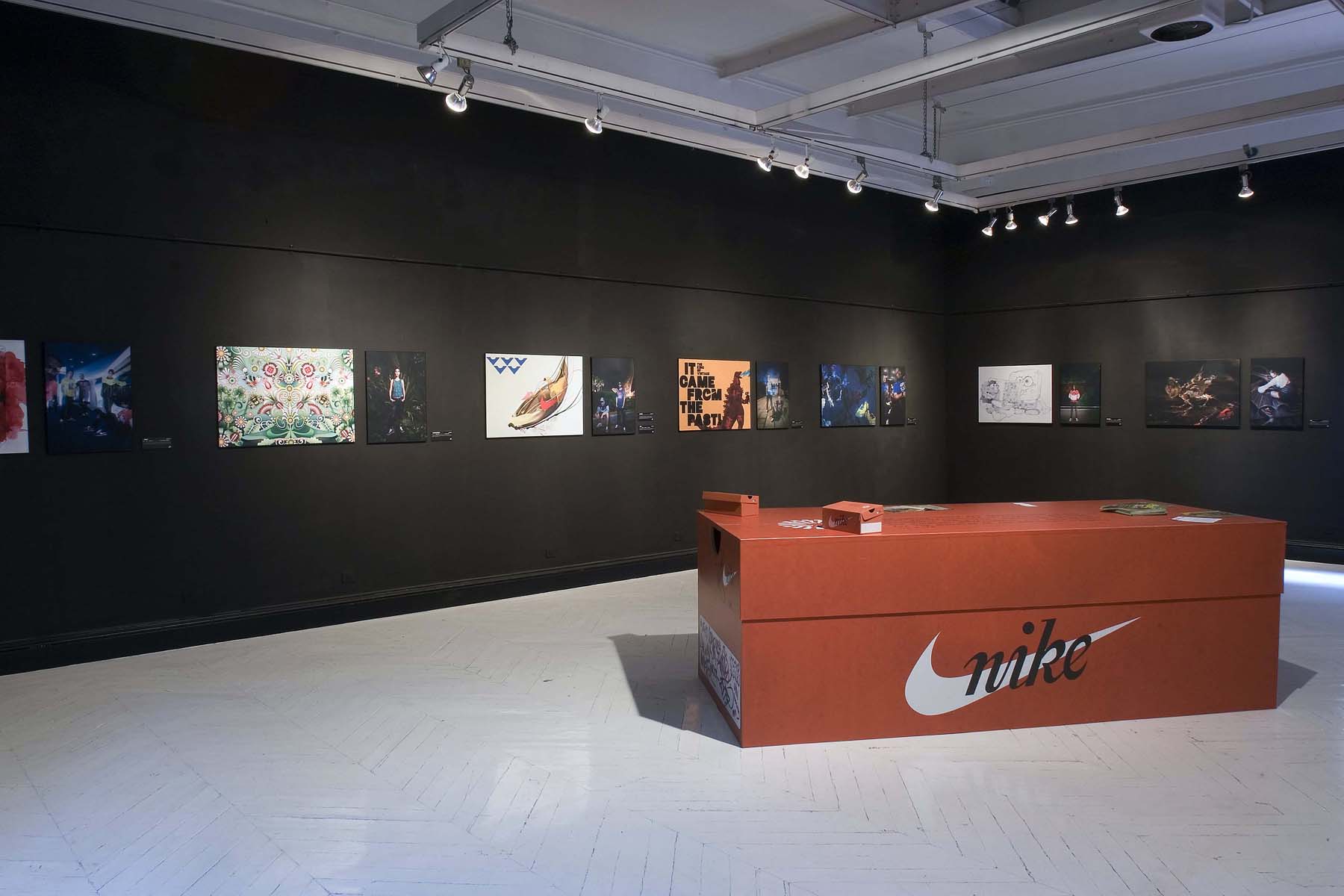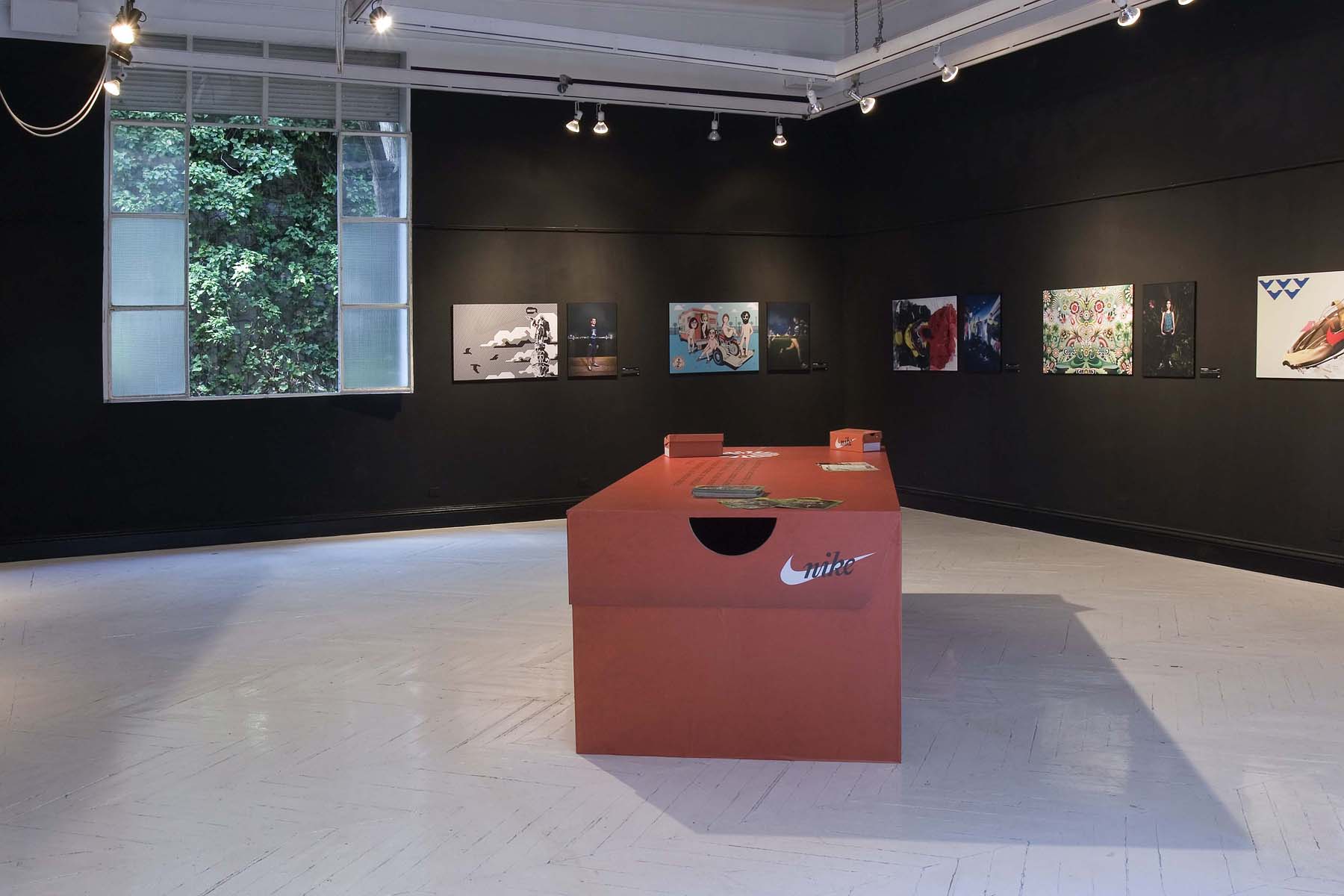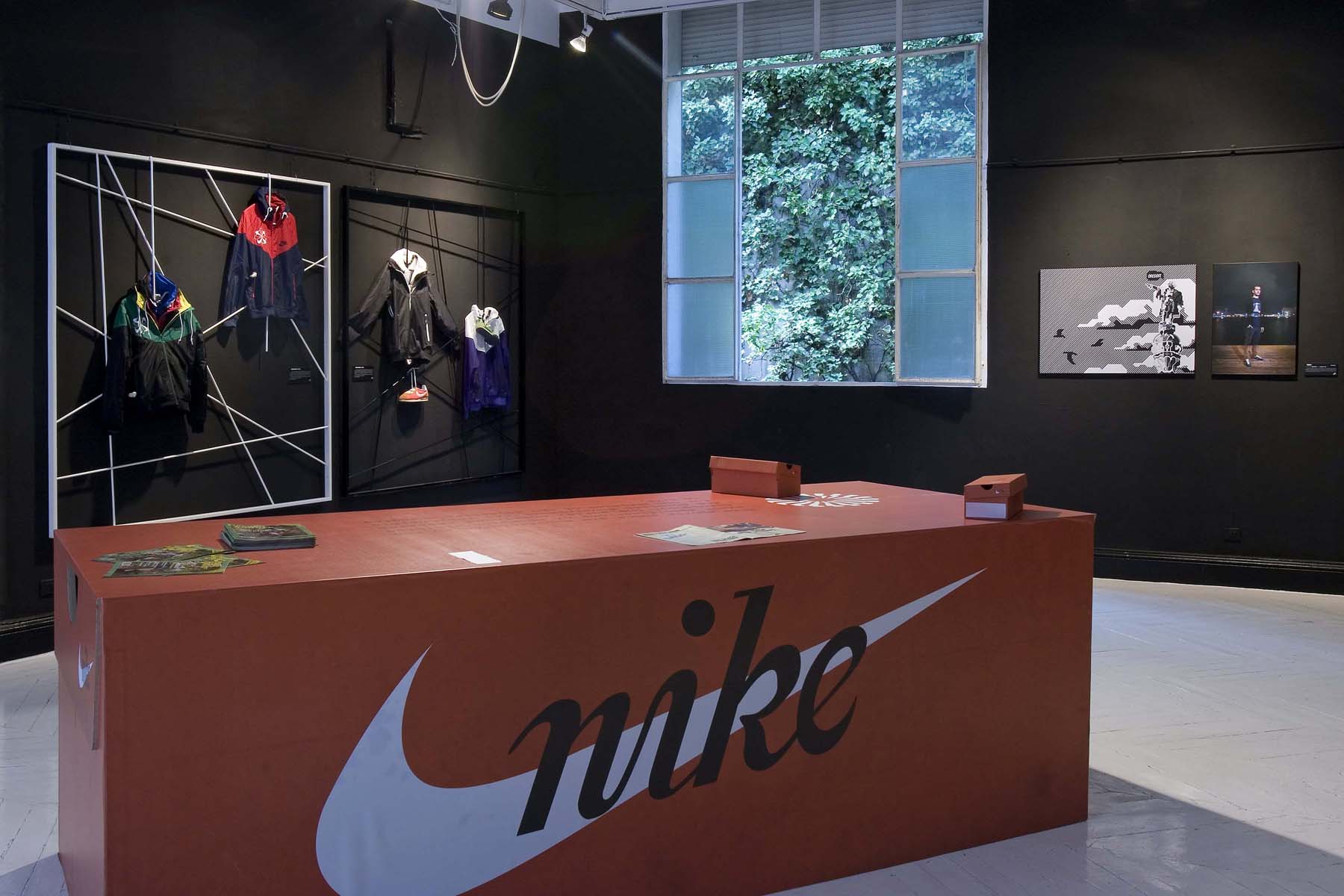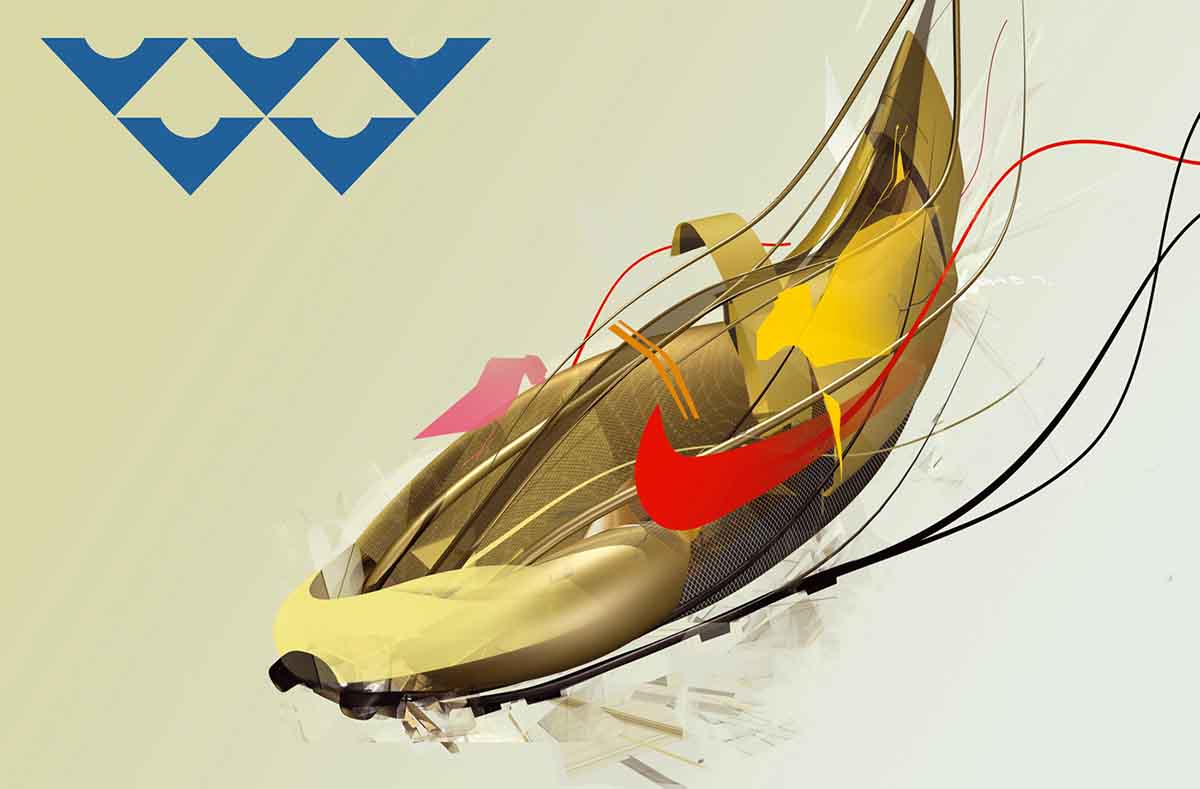
35 Years Nike, The Running Company
Nike
22/11/07. (Sala 253)
Nike celebrates 35 years of history with an innovative exhibition which unites sport, art and culture
Nike was founded by Bill Bowerman and Phil Knight, trainer and athlete at Oregon University, in 1972. 35 years late La Sala Vinçon in Passeig de Gràcia welcomes 9 of the best graphic designers and design work from the generation of the 70’s: Actop, Toormix, Silvia Prada, Inocuo, Vasava, Area 3, Catalina Estrada, Diva y Bernat Lliteras, photographs by Javier Tles. This spontaneous union between sport, culture and art holds 9 pieces of work carried out by youth who have grown, dressed and even customized some of these original Nike products to the extent of converting them into icons of a whole generation. Amazingly fresh and spontaneous pieces of work.
The exhibition, which will be held from 18 October until 10 November, is a historical journey of Nike’s annals, a cultural experience because it relates products with indelible parts of Barcelona and lastly a meeting of a generation because the 9 artists that collaborate are contemporaries of the 70’s, of the brand.
Three decades after its creation, Nike re-launches The Running Company collection of footwear and clothes which was inspired by running. Its vintage spirit is still as lively in the streets today. Comprised of the 6 most emblematic models such as the well known Cortez (72), first nylon made running shoe; the Oregon Waffle (73) which incorporated rubber studs as a new way to improve grip on the athlete’s running track; the LD-1000 (76) the first designed to soften knee rotation and avoid injuries; the Daybreak (77) which incorporated for the first time a wide form for long distance runners, and the elite (77), the lightest sports shoe of its time and with which Joan Benoit won gold in Boston in 1979. Another emblematic Nike model was the Wind Runner jacket (78), with double lining, wind and water proof, inspired by the coats worn by primitive red Indians from the North-West of America that allowed athletes to train in the wind and rain, etc.
